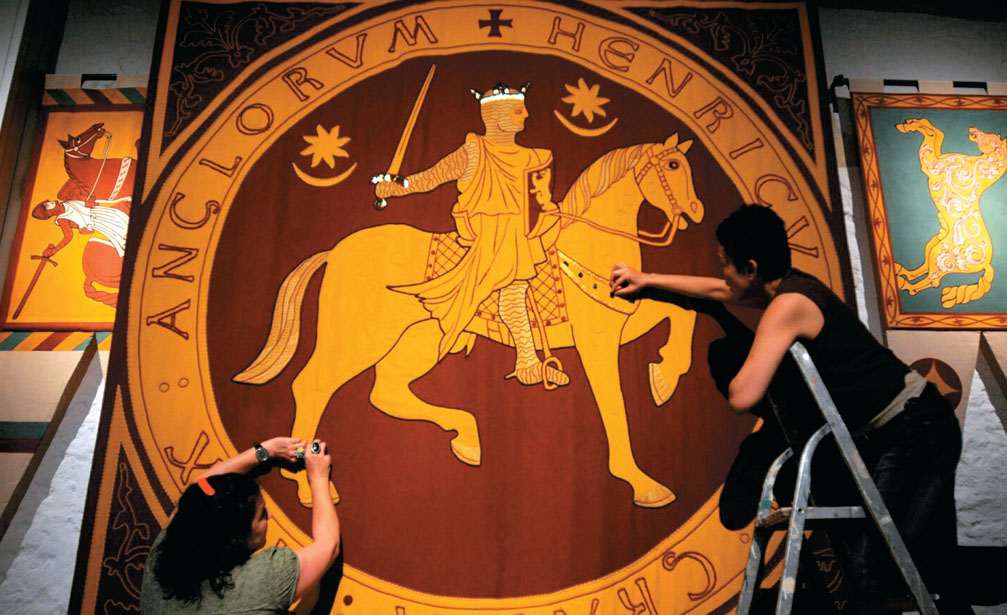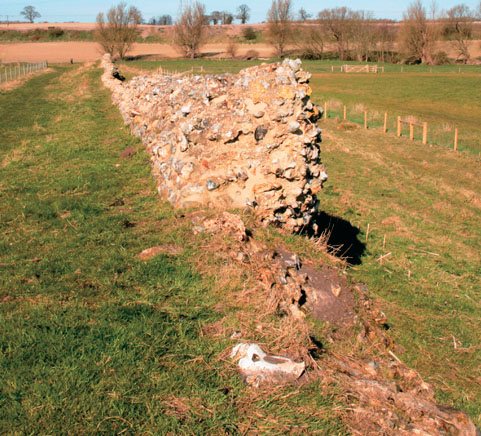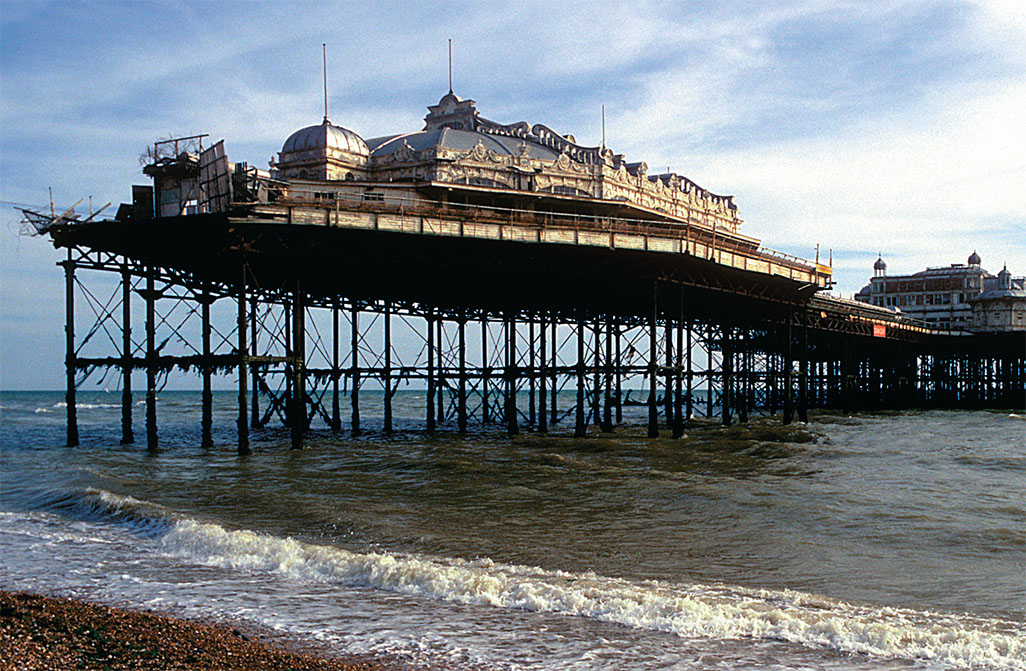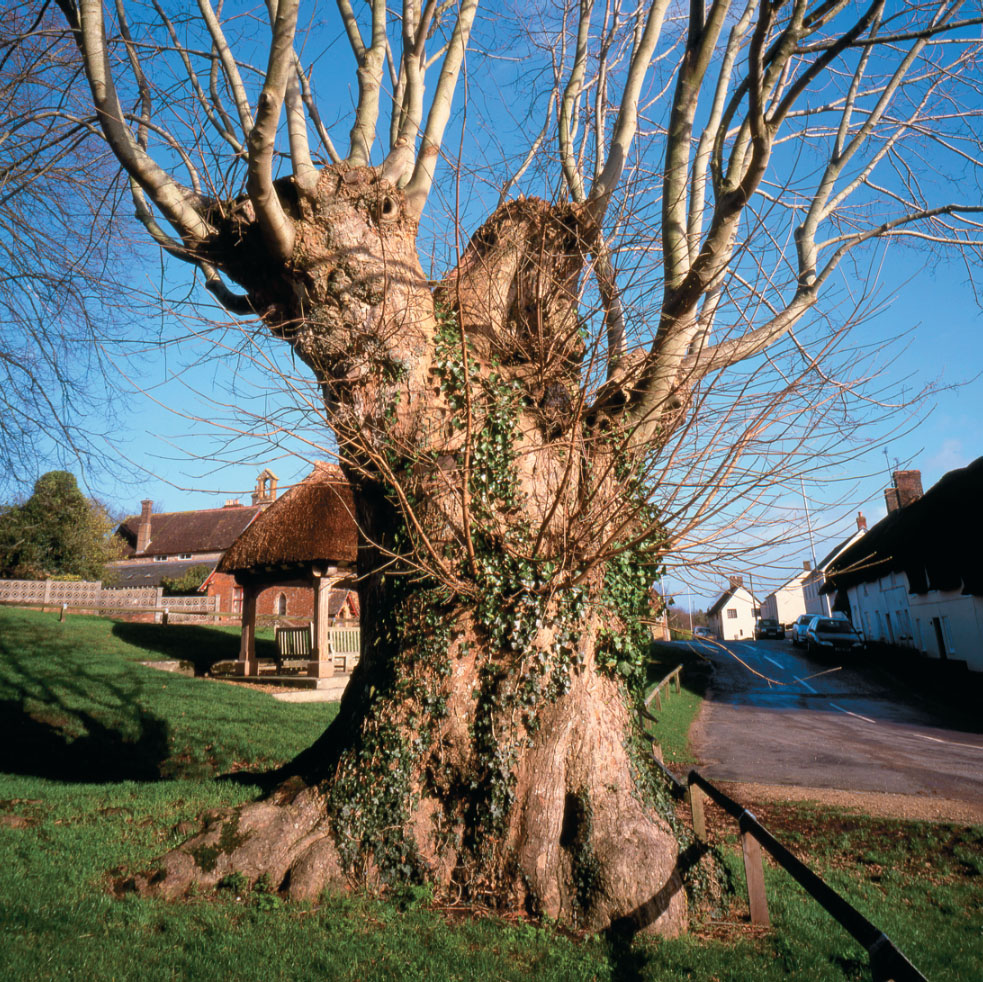
York, Yorkshire
Railway Museum’s New Director of Fun
WHEN THE DIRECTOR of York’s National Railway Museum recently announced his retirement, six-year-old Sam Pointon promptly posted off his application for the job. Museum officials were so impressed with his application that, while they couldn’t exactly give him the job, they have appointed him the museum’s Director of Fun—charged with keeping the experience at the museum fun for its younger visitors.
[caption id="Dateline_img1" align="aligncenter" width="1024"]

COURTESY OF THE NATIONAL RAILWAY MUSEUM
And Just in Passing
Llanwrtyd Wells Anointed Village of the Year
The Calor Village of the Year title has been granted to the mid-Wales community that describes itself as Britain’s smallest town. With a population of 762, Llanwrtyd Wells, Powys, is known for its “can-do” attitude as well as its quality of life. Mayor June Newman enthused, “It’s a very small community with a very big heart.”
[caption id="Dateline_img2" align="aligncenter" width="444"]

©STEPHEN SYKES/ALAMY
Edinburgh Chuffed with Double Honor
First, a broad YouGov poll from across Britain found Edinburgh voted the most desirable British city in which to live. Auld Reekie’s culture, cuisine, friendliness, safety and cost of living were the deciding indicators. Then, in a survey by hotel chain Travelodge, Edinburgh topped the poll of British cities to “see before you die” for many of the same reasons. Congratulations, Edinburgh!
[caption id="Dateline_img3" align="aligncenter" width="444"]

CHRIS HEPBURN/ISTOCKPHOTO
And Just in Passing
[caption id="Dateline_img4" align="aligncenter" width="444"]

ST. EDMUNDSBURY BOROUGH COUNCIL
Beware the Christmas Fairs
Continental-style Christmas Fairs have become increasingly popular across Britain. If you happen to be in the neighborhood, the Bury St. Edmunds Christmas Fayre, November 27-29, is the biggest in East Anglia. Five different markets of stalls selling everything from local produce to European crafts, complete with fun fair and street entertainment, will fill the historic town center.
The World’s Oldest Church Bells Come Home
The five bells of St. Lawrence Church, Ipswich, were heard regularly by a young Cardinal Wolsey before Henry VIII came along. For two decades the bells have been silent because of the poor condition of the tower housing them. Now, following a £100,000 restoration project, a good cleaning and a new steel frame, the bells have returned home. The oldest of the bells dates from 1450, and together they form the oldest medieval full circle set of bells in the world.
City Hall, London
Bye, Bye Bendy Buses
[caption id="Dateline_img5" align="aligncenter" width="1024"]

JOHN STILLWELL/PA
IF YOU HAVE hung around London much in the last few years, you, too, have likely been irritated by the hinged double-length monstrosities known as bendy buses. So disliked are the contemporary replacements for the old doubledecked Routemasters that Mayor Boris Johnson campaigned last year with a pledge to remove them.
Now, Mayor Boris has taken a batch of the bendy buses out of service, with plans to phase them all out by 2011. “These writhing whales of the road have swung their hefty rear ends round our corners for the final time,” quipped the colorful Johnson.
Dover, Kent
Restoring the 12th Century at Dover
AFTER A two-year, £2.5 million effort, the keep of Dover Castle has been refurbished to reflect the splendor of the royal court during the 12thcentury heyday of King Henry II. Following the disastrous martyrdom of Archbishop Thomas Becket, Henry II pumped huge amounts of wealth into the royal castle at Dover. The medieval PR exercise was designed to impress foreign VIPs who landed in Dover on their way to Becket’s shrine. Some 140 English Heritage craftsmen designed and made 80 pieces of furniture and more than 1,000 objects including embroidered textiles, wall hangings and 21 oak doors for rooms ranging from the king’s chamber to the kitchen.
[caption id="Dateline_img6" align="aligncenter" width="1007"]

©ENGLISH HERITAGE
Peterborough, Cambridgeshire
World’s First POW Camp Unearthed
BRITISH archaeologists have uncovered what is thought to be the first purpose-built prisoner of war camp in a field near Peterborough. The 22-acre site was bought by the Government in 1797 to construct a barracks for holding French prisoners captured during the Napoleonic Wars.
Known as Norman Cross Depot, the camp eventually held some 7,000 foreign troops between 1797 and 1814. The location also holds the burial site of some 1,700 prisoners who died in captivity, most of those from typhoid in 1800-01. Plans are now underway for the first ever archaeological excavation of the site, which is being hailed as “incredibly important for world history.”
Broadcasting House, London
Sir Terry Calls It a Career
AFTER 40 YEARS as a radio and television icon, the cheery, self-effacing Sir Terry Wogan is leaving the microphone. Gloom and mourning prevailed as eight million BBC Radio Two listeners heard the news that Sir Terry was retiring. Voted Britain’s most popular broadcaster (eh, and most unpopular), Sir Terry has greeted the day with his fans on BBC2’s “Wake Up to Wogan” since 1993. Chosen no. 46 on the Daily Telegraph’s list of 100 most powerful people, Sir Terry’s announcement was met with genuine despair by millions in his devoted fan club—the TOGs (Terry’s Old Geezers). After he announced his goodbye, Sir Terry played his favorite song, Nat King Cole’s “Stardust,” while thousands of the witty broadcaster’s disconsolete fans flooded the BBC with their condolences.
[caption id="Dateline_img7" align="aligncenter" width="1009"]

YUI MOK/PA
And Just in Passing
Oops. Foiled Again.
A Royal Navy Wren was arrested aboard HMS Manchester in Portsmouth this summer, charged with smuggling £5 million worth of cocaine into the country in her locker. The Royal Navy destroyer was returning from an antinarcotics operation in South America.
[caption id="Dateline_img8" align="aligncenter" width="441"]

MARTIN KEENE/PA
FOR THE RECORD
The Largest Bottle of Whisky Ever
Yes, Guinness World Records have indeed certified that a 5-foot tall bottle of whisky unveiled in the wee Strathspey village of Tomintoul is the world’s biggest. The bottle holds 150 bottles of 14-yearold single malt Tomintoul whisky. Bottoms up may take a while.
[caption id="Dateline_img9" align="aligncenter" width="123"]

©MIKE DRURY/WC IMAGING
Caistor St. Edmund, Norfolk
Digging Around Caistor Roman Town
A NEW archaeological dig is underway at Venta Icenorum, the buried Roman town at Caistor St. Edmund, a few miles south of Norwich. First discovered in 1929, the site had a geophysical survey recently that uncovered pre-Roman origins of the town—thought to have been established here in the heart of Iceni territory after the suppression of Queen Boudicca’s rebellion in AD61.
Dr. Will Bowden, leading the dig for the Norfolk Archaeological Trust, is enthusiastic: “Caistor is one of the most important but least understood sites of Roman Britain. To have the opportunity to excavate here is that chance of a lifetime.”
[caption id="Dateline_img10" align="aligncenter" width="481"]

©JIM LAWS/ALAMY
Hastings, East Sussex Piers at the End of the Line?
TEN OF Britain’s 55 remaining sea front piers are in serious danger of collapse or demolition, according to the National Piers Society. These muchloved symbols of the British seaside, susceptible to bad weather, fire and stormy seas have been slowly disappearing from the old coastal resorts. Of the 101 pleasure piers built between 1814 and 1957, just over half remain, and 10 of those are closed to the public. Hastings Pier tops the society’s “at risk” list. The survival of the piers depends on whether their owners, public or private, commit to the expensive maintenance required on the aging structures. The British Association of Leisure Parks, Piers and Attractions is calling upon the government to take seriously the preservation of existing piers as a part of Britain’s seaside heritage.
[caption id="Dateline_img11" align="aligncenter" width="1024"]

©LOOP IMAGES/ANTHONY KAY
Brighton’s famous West Pier has been derelict for years. Will it be restored or demolished?[/caption]
[caption id="Dateline_img12" align="aligncenter" width="359"]

PA WIRE
R.I.P.[/caption]
Harry Patch
It is indeed the end of an era. The last surviving British veteran of World War I, Harry Patch, has died at age 111. Conscripted in 1917, Patch was in the trenches of France on his 19th birthday, and wounded in the horrific battle of Passchendaele. He recovered to spend a career as a plumber in Somerset. In his later years, Patch was decorated by both France and Belgium for his service, and for bringing into the 21st century first-hand memories of a war that has now passed into history. Patch was honored with a service at Wells Cathedral.
Good-bye to Marlborough’s Dr. Maurice
For 217 years, residents of the Wiltshire market town of Marlborough have turned to Dr.Maurice when they fell ill. Since 1792 members of the Maurice family have served at the local surgery in an unbroken line of six generations. Now, the last of the line, Dr. David Maurice is set to retire as senior partner at the Marlborough Medical Practice. His son, Dr. Maurice, is in hospital practice in London.
And Just in Passing
Edinburgh Fringe Names Top Gag
Nine comedy critics heard jokes by the thousand before settling on the prize for the funniest joke of this year’s Edinburgh Fringe. The winning gag was a one-liner delivered by comedian Dan Antopolski in his show “Silent But Deadly”: “Hedgehogs. Why can’t they just share the hedge?
Winding the Church Clock Is Just Too Dangerous
Since 1793, the church clock at St. Michael’s in Helston, Cornwall, has been wound by hand without incident. Now the health and safety brigade have pronounced it an unsafe practice and the diocese is directing the local folk to cease this unseemly practice after 216 years. What a wind-up.
Slime Blooms on Southern Shores
A hot June, wet July and hot August set perfect conditions for algae growth along England’s south coast this late summer. Broad slicks of seaweed sludge up to 8 inches thick carpeted hundreds of acres of mudflats and choked harbors at Portsmouth, Poole and Chichester as well as along the Isle of Wight.
[caption id="Dateline_img13" align="aligncenter" width="440"]

©SOLENT NEWS AND PHOTO AGENCY
Algae sludge carpets the coast.[/caption]
East End, London
ATMs Speak Cockney
SAUSAGE AND mash with receipt, please. A number of Bank Machine ATMs in East London have been programmed to make transactions in the neighborhood dialect, Cockney rhyming slang. After the machine reads their bladder of lard, customers will enter their Huckleberry Finn before making withdrawals in multiples of speckled hen, for instance. For some bread in your sky rocket, though, it’s still probably easier than going to the rattle and tank.
[caption id="Dateline_img14" align="aligncenter" width="980"]

JOHNNY GREEN/PA
Swindon, Wiltshire
In Search of Ancient Trees
THE NATIONAL Trust, one of Britain’s biggest landowners, is beginning a three-year project to identify heretofore unrecorded ancient trees on its more than 600,000 acres of property. The NT hopes to find 40,000 such ancient trees – remnants of Britain’s primeval forests. What constitutes an ancient tree varies by species, with oaks older than 600 years and beech trees older than 300 years included.
Once specimens have been identified, a management plan for each tree will help ensure it lives as long as possible. In addition to sustaining a diverse, rare ecosystem, many such trees have a significant cultural value. Among the trees the Trust expects to list are the apple tree under which Isaac Newton sat in 1655, a yew tree that inspired William Wordsworth and the sycamore under which the Tolpuddle Martyrs first met in 1832.
[caption id="Dateline_img15" align="aligncenter" width="983"]

©EDWARD PARKER/ALAMY





Comments